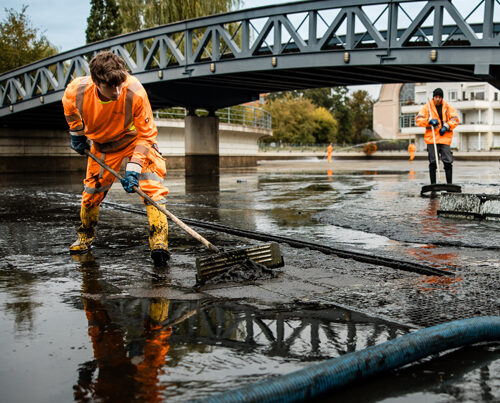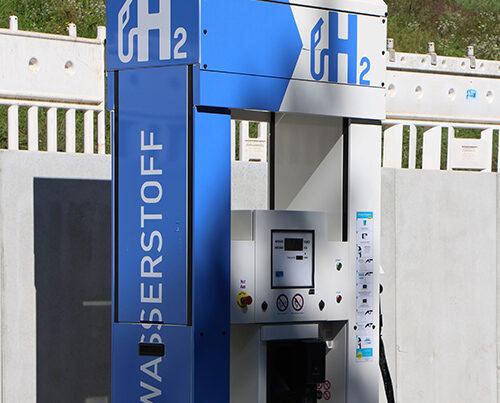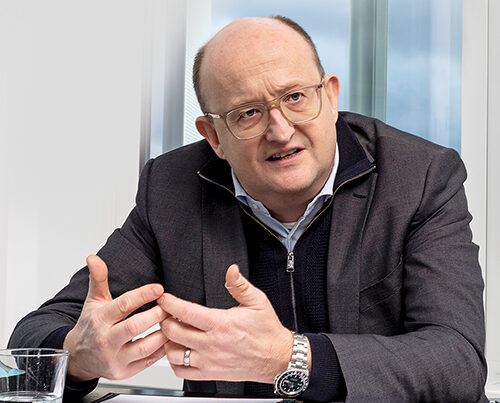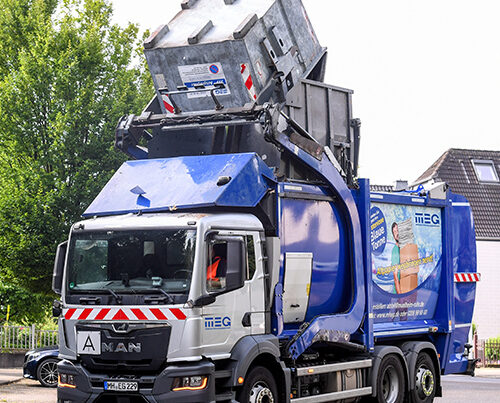Alternative fuel systems have not been fully developed yet. It is, therefore, not easy to decide today which of the options will be best for tomorrow. As head of the Sulzbach-Rosenberg branch of Fraunhofer UMSICHT, it is Professor Matthias Franke’s task to develop waste management and resource strategies as well as to focus on the recycling of waste and residual materials so they can either be reused or used to generate energy. In the following interview, he talks about the potential of biogenic residual and waste materials and takes a look ahead into the future.

Professor Franke, the Clean Vehicles Directive permits clean commercial vehicles to use a whole range of alternative fuels. Which concept may turn out to be the winner?
Looking ahead, there is likely to be a mixture of different concepts in the individual fields of application. Heavy-duty vehicles weighing more than 3.5 tonnes are considered to be clean if they are run on alternative fuels such as electricity, hydrogen, natural gas and synthetic or biofuels. Vehicles that are fully electric or run on hydrogen-based fuels effectively have zero emissions. However, the emissions generated by the production of the electricity and hydrogen can only be eradicated if the electricity mix is completely renewable.
These different kinds of fuels are in the process of being trialled in the waste management sector at the moment. A number of challenges still have to be mastered – be it to do with the vehicles’ range, the recharging or refuelling infrastructure or cost effectiveness. Biofuels, though, can be used with the infrastructure and technologies that are already in place. Any CO2 emissions coming from such vehicles are climate neutral. In fact, depending on the type of substrate used and the conversion process, it is even possible for the emissions to be carbon negative.
How should the use of biogas made from organic waste be seen from the point of view of sustainability?
The first advantage is that biogas made from organic waste and other types of residual materials is not in competition with the food and animal feed industry, for example, for energy crops. What’s more, the CO2 emissions generated as a result of cultivating such crops are also avoided. Biogas made from organic waste and other types of residual materials, therefore, is one of the so-called advanced fuels as described in the Renewable Energy Directive or RED II. Compared to fossil diesel fuel, biomethane has the big advantage that it considerably reduces greenhouse gas emissions. At the same time, the NOx and particulate emission limits for diesel are safely adhered to. In the future, this might be supplemented with synthetic methane from power-to-gas systems. Having said that though, the advantages of these electricity-based fuels can’t truly come to the fore until renewable energies make up a much greater share of the electricity mix.

The production of biogas is already well established in the public sector. This gas is primarily used to produce electricity and heat. What benefits would it bring to the mobility sector?
Biogas or biomethane is a very flexible source of energy and has less environmental baggage than other fuels. One of the main arguments for using it for mobility is that it would quickly help to reduce GHG emissions as the infrastructure is already in place and the technology is already on the market. Compared to the other kinds of alternative fuels that are less developed, the use of biogas could also be scaled up quickly and could help cut GHG emissions in the mobility sector by 2030 at relatively low cost.
What other alternative fuels do you believe have a promising future in road freight transport?
It will continue to be very difficult in the future to electrify some sections of road freight transport and agriculture. These particular vehicles could be run on gas or on liquid fuels made from residual materials such as organic waste, digestate, plant and tree cuttings or sewage sludge. Conversion processes such as gasification and pyrolysis can be used to produce such fuels. We have a development project at Fraunhofer UMSICHT that is based on biogenic residual and waste materials. A process has been developed that has made it possible for high quality oil and gas to be produced from less likely input materials such as sewage sludge and digestate. This gas mixture is rich in hydrogen and CO2 and is used, for example, in methanol synthesis or Fischer-Tropsch synthesis. It is also possible to separate the hydrogen and use it for something else. The oil is further processed using hydrotreatment and then separated into the fuel fractions diesel, petrol and kerosene. It can also be used just as it is by refineries.
Then we have an exciting future ahead of us. Many thanks for taking the time to speak to us!
Image credits: image 1: REMONDIS; image 2: Adobe Stock: ink drop, Adobe Stock: by-studio; image 3: Adobe Stock: ink drop, Adobe Stock: Kimo












